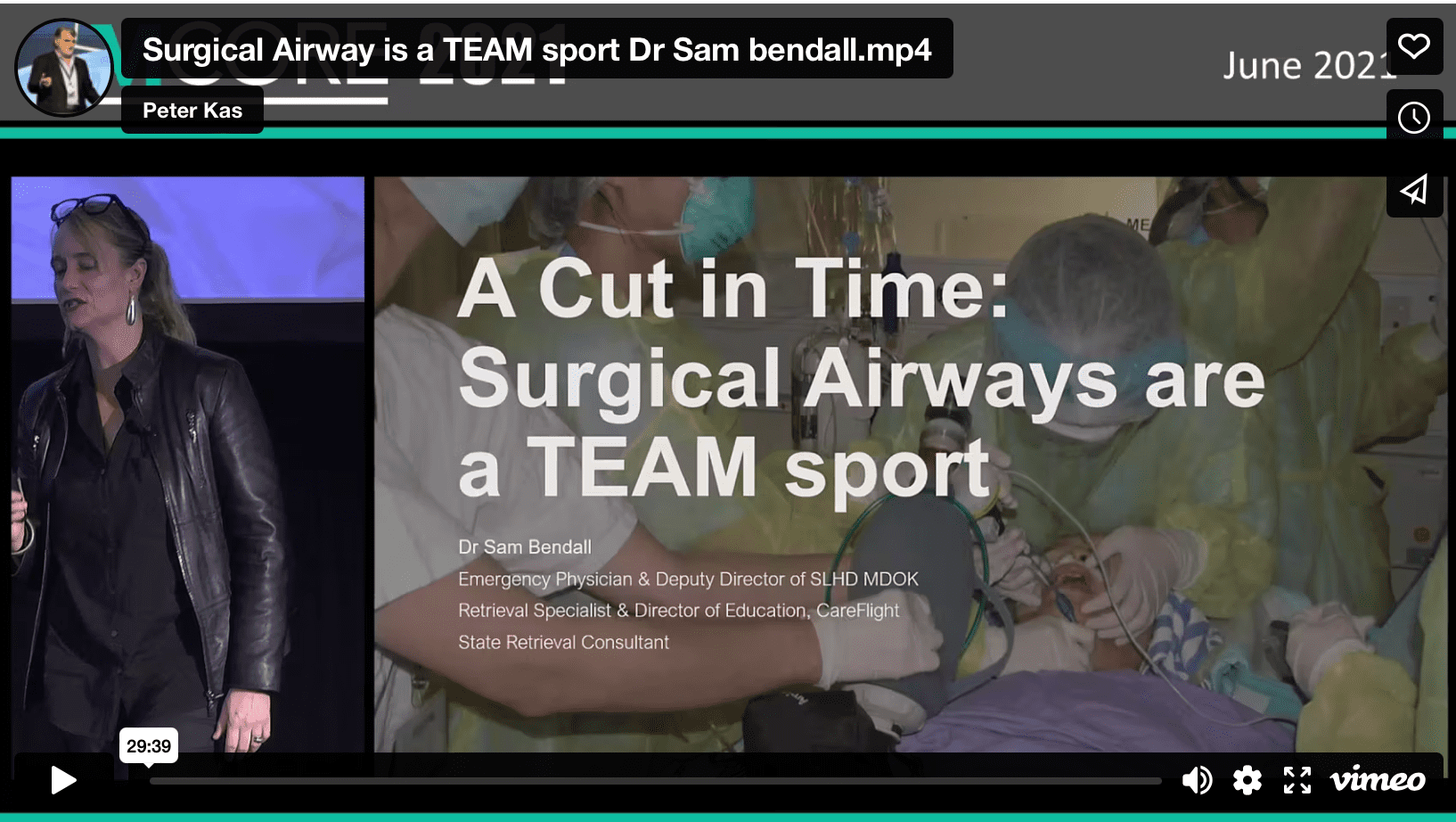This week we look at the Surgical Airway and how it involves the whole team. When we practice surgical airway we usually do so at a skill station, by ourselves. The real-world surgical airway has so many moving parts and involves the whole team. It should be performed as a team.
This video lecture is from the 2021 EMCORE Conference in Sydney, given by a great educator, Emergency Physician and Retrieval Physician and our good friend, Dr Sam Bendall. As Dr Bendall explains; surgical airway is a TEAM sport.
Our approach to intubation, usually involves a plan A, followed by a Plan B if that fails. This can be followed by a Plan C and so on. Plan D is usually the final step and it is the surgical airway. The problem, is that we tend to use the same plan for every patient. We should tailor our approach to each patient.
Following assessment of a patient, perhaps the surgical airway becomes our plan B. It will depend on the situation before us and the chance of a failed intubation/ventilation/oxygenation scenario.
In every airway that we do, we must assume that it may be a difficult/failed airway and be prepared to perform a surgical airway.
Dr Bendall asks us to answer three questions in each scenario:
- How likely is a surgical airway in this patient?
- Am I ready to do a surgical airway?
- Is our team ready to do a surgical airway?
We need to prepare for this scenario. Further, we need to prepare as a team. The surgical airway is more than just cutting the neck and putting a tube in. There are so many parts to it and the team dynamic is complex, but crucial to getting it right.
Will you perform a vertical or horizontal incision?
What’s the ‘standard patter’ you should use with the team?
What is the approach when the decision is made and are roles assigned and equipment in place? This should include:
- Identifying the plan and where surgical airway will sit in this plan
- Which side you stand on to perform the procedure
- Where the equipment is set up
- What are the roles of the team?
- Who pulls the patient up and extends the neck?
- Who will ventilate?
- Who holds the endotracheal tube and bougie?
Watch this lecture. It’s time worth spending. I will cover surgical airway at the next EMCORE Conference










